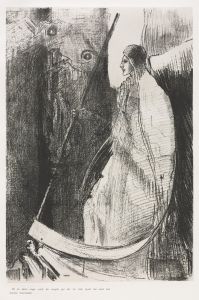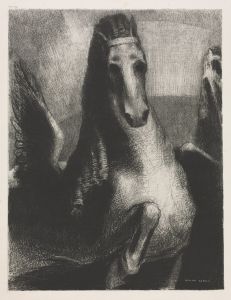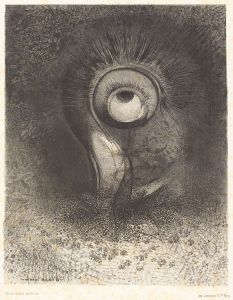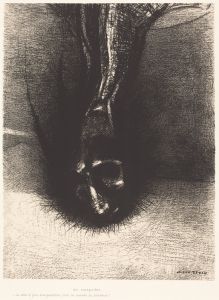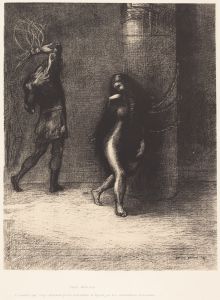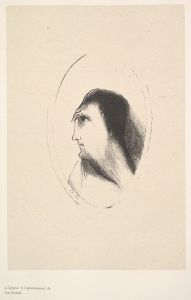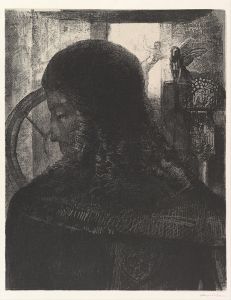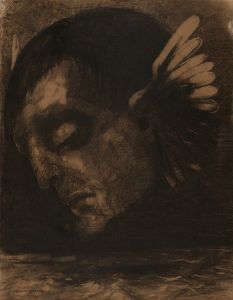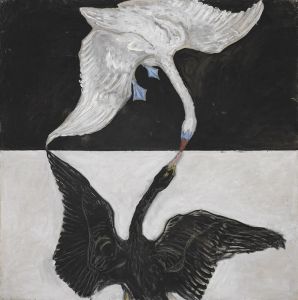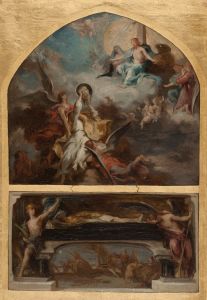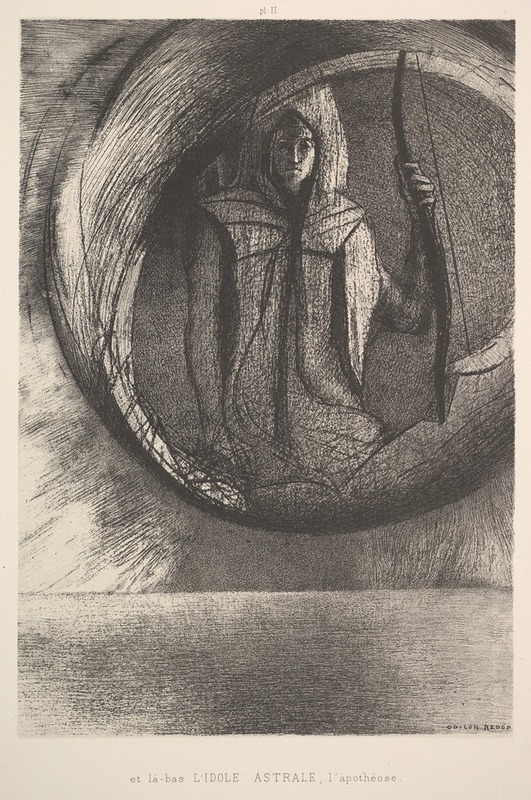
And over there, the Astral Idol, the Apotheosis
A hand-painted replica of Odilon Redon’s masterpiece And over there, the Astral Idol, the Apotheosis, meticulously crafted by professional artists to capture the true essence of the original. Each piece is created with museum-quality canvas and rare mineral pigments, carefully painted by experienced artists with delicate brushstrokes and rich, layered colors to perfectly recreate the texture of the original artwork. Unlike machine-printed reproductions, this hand-painted version brings the painting to life, infused with the artist’s emotions and skill in every stroke. Whether for personal collection or home decoration, it instantly elevates the artistic atmosphere of any space.
Odilon Redon (1840-1916) was a French symbolist painter, printmaker, draughtsman, and pastellist. He is known for his mysterious and imaginative works, often depicting fantastical and dream-like scenes. One of his notable works is "And over there, the Astral Idol, the Apotheosis" (French: "Et là-bas, l'idole astrale, l'apothéose").
"And over there, the Astral Idol, the Apotheosis" is a pastel on paper created by Redon around 1893. The artwork is part of his series of works that explore themes of spirituality, mysticism, and the subconscious. Redon's use of color and light in this piece exemplifies his departure from the darker tones of his earlier charcoal drawings, known as "noirs," to the vibrant and ethereal quality of his later pastels.
The painting features a central figure, often interpreted as an idol or deity, surrounded by a luminous and otherworldly atmosphere. The figure appears to be in a state of apotheosis, a term that refers to the elevation of someone to divine status. This theme is consistent with Redon's interest in the transcendental and the exploration of the human psyche.
Redon's work was influenced by a variety of sources, including literature, philosophy, and science. He was particularly inspired by the writings of Edgar Allan Poe, Charles Baudelaire, and Stéphane Mallarmé, as well as the scientific discoveries of his time. These influences are evident in the dreamlike and symbolic nature of his art.
"And over there, the Astral Idol, the Apotheosis" is characterized by its use of vibrant colors and soft, diffused light. Redon employed a technique that involved layering pastel pigments to create a glowing, almost iridescent effect. This approach allowed him to achieve a sense of depth and luminosity that enhances the mystical quality of the scene.
The composition of the painting is carefully balanced, with the central figure drawing the viewer's attention while the surrounding elements contribute to the overall sense of otherworldliness. The use of organic shapes and flowing lines adds to the dreamlike quality of the work, creating a sense of movement and fluidity.
Redon's work, including "And over there, the Astral Idol, the Apotheosis," has been celebrated for its ability to evoke a sense of wonder and contemplation. His unique approach to color and form, combined with his exploration of the inner world, has made him a significant figure in the Symbolist movement and a precursor to the Surrealist artists of the 20th century.
Today, Redon's works are held in major museums and collections around the world, including the Musée d'Orsay in Paris, the Museum of Modern Art in New York, and the Art Institute of Chicago. "And over there, the Astral Idol, the Apotheosis" continues to be admired for its beauty and its ability to transport viewers to a realm of imagination and spirituality.







